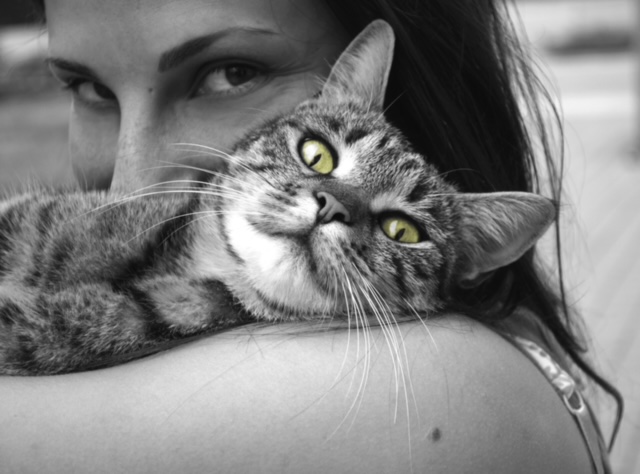
In humans, separation anxiety is considered a normal part of child development, mostly occurring between 8-12 months old, but in abnormal cases, it can last into elementary or teenage years. This can make life very challenging for those who are diagnosed. But what about separation anxiety in cats?
Separation anxiety is defined as an abnormal amount of anxiety when separated from parents or owners. Cats have a reputation for having aloof, antisocial, or careless personalities, but research has shown that this claim is often false; cats have been shown to be securely attached to their owners, like dogs and children. A study found that around 13% of cats experience symptoms of separation anxiety.
Symptoms of separation anxiety in cats can involve excessive meowing, yowling, or crying, constantly seeking attention, destroying things, excessive grooming, eating too fast or too little, or distress as their owner prepares to leave the house. These symptoms can also vary depending on gender, breed, or age. Female cats are more prone to developing separation anxiety than male cats, and more commonly exhibit excessive grooming behaviors, while male cats are more likely to exhibit destructive behaviors. Certain breeds such as Burmese and Siamese, who are naturally dependent on their owners, can also experience it. Kittens who are separated or abandoned at a young age often have a hard time developing independence and confidence.
Separation anxiety is diagnosed in cats through a thorough vet exam since these symptoms can also harbor other health concerns. These exams can include things such as lab work (blood and urine tests) and asking questions about your cat’s behavior. It is also helpful to record a video of your cat’s behavior when they are home alone.
Separation anxiety disorders in all species can be divided into three major categories: modifying the environment around the affected individual, changing their behavior, or medicine to alleviate symptoms. Modifying the environment is a treatment that involves providing a cat with plenty of activities that keep them busy while their owner is gone. These can include things such as puzzle feeders (toys that release food when played with), TV shows designed specifically for cats, and only showing attention to a cat when they show signs of independence, which can lead to them being less stressed. You can find some of these fun cat toys on Amazon and Chewy.
Changing a cat’s behavior involves discouraging certain behaviors and encouraging healthier responses to stressful situations. Methods for this include things like counterconditioning, which is used to change a negative feeling into a positive one, such as picking up your keys and giving your cat a treat. This helps them associate picking up your keys with a positive feeling, rather than a negative one. If these two forms of treatment aren’t enough, your vet may prescribe a supplement or medication to alleviate your cat’s anxiety.
Aside from treatment methods, there are also plenty of things to avoid if your cat is experiencing separation anxiety. These can include getting another cat or punishing your cat for showing anxious behaviors. There is no guarantee that your cat will like a new cat, and while you’re changing the environment to accommodate the new cat, you’re also adjusting the older one’s environment. Additionally, punishments such as time-out and yelling only make a cat more stressed and anxious.
If you’re looking to adopt a cat, some helpful ways to prevent separation anxiety from occurring in the first place would be to adopt littermates or bonded pairs of adult cats or to encourage independence and confidence in one cat. Cats who are well-socialized with humans are also good options.
If you’re concerned about separation anxiety in your cat, talk with your veterinarian about establishing a proper diagnosis and treatment.
For more information on cats – check out the rest of our blog.
This piece is written by Estelle Ferrari. A local high school student who has a love of cats and creativity.

